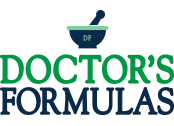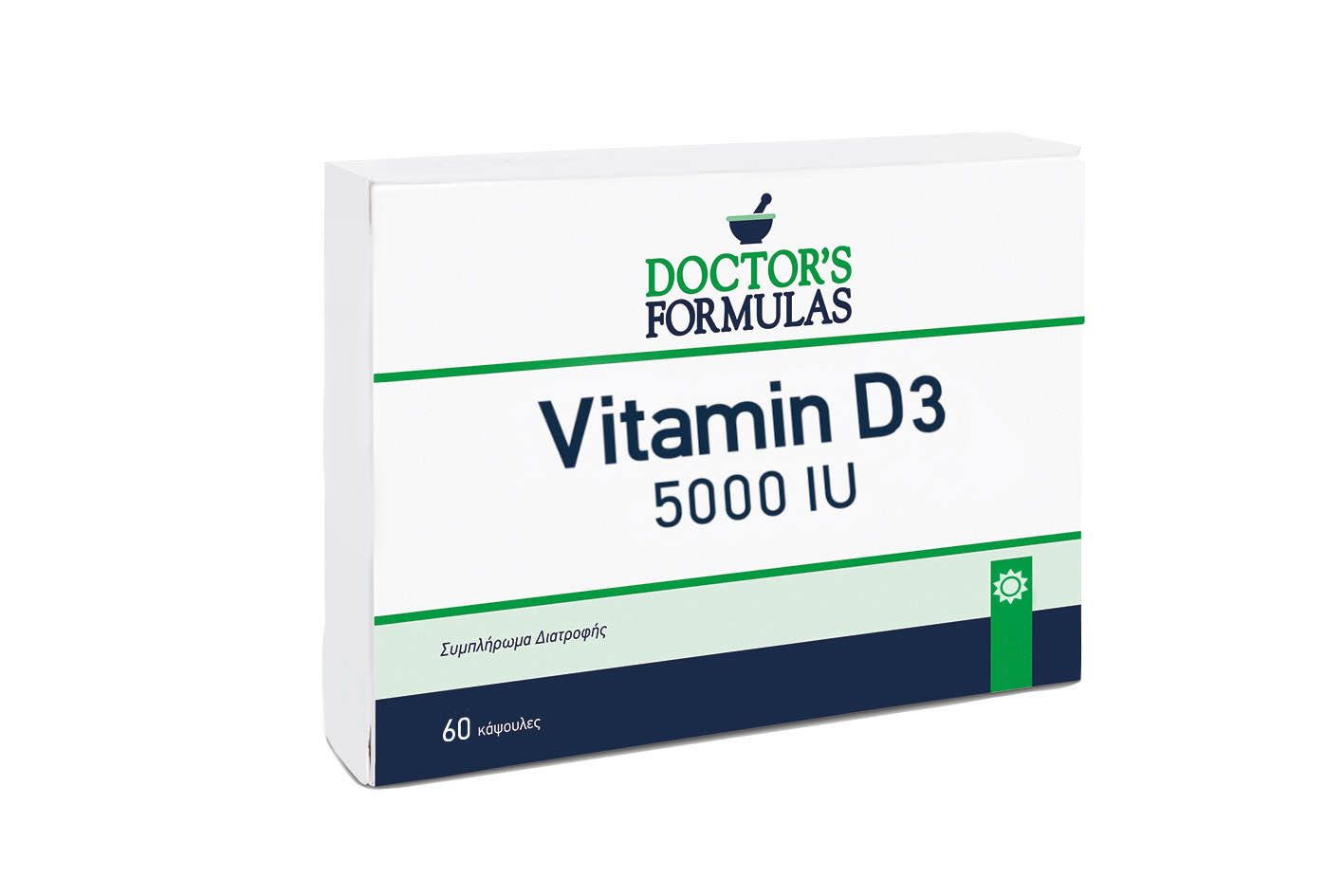Vitamin D & Atopic Dermatitis
Vitamin D & Atopic Dermatitis
The impact of vitamin D supplementation as adjuvant therapy on clinical outcomes in patients with severe atopic dermatitis
A randomized controlled trial
Vitamin D supplementation with standard treatment yielded positive clinical outcomes in mild and moderate atopic dermatitis; however, the potential benefit of vitamin D in severe cases remains unclear.
This study aimed to evaluate the impact of vitamin D supplementation on response to standard treatment in pediatrics with severe atopic dermatitis.
The patients were randomized to receive either vitamin D3 1600 IU/day or placebo, plus baseline therapy of topical 1% hydrocortisone cream twice daily for 12 weeks. The primary endpoints were the change in mean Eczema Area and Severity Index (EASI) score at the end of the study and the mean percent change in EASI score from baseline to week 12. Eighty-six subjects completed the study. The treated group achieved a significantly higher level of 25-hydroxy-vitamin D (P < .001) compared to the control group at week 12.
The mean EASI score was significantly lower in the treatment group compared to the placebo group (P = .035). The percent change in EASI score from baseline differed significantly between the supplementation (56.44 ± 29.33) and placebo (42.09 ± 19.22) groups after intervention (P = .039).
Vitamin D supplementation could be an effective adjuvant treatment that improves the clinical outcomes in severe atopic dermatitis.
Atopic dermatitis (AD) is a chronic relapsing inflammatory skin disease with intermittent flares and debilitating effects on the patient's quality of life. It is the most common skin disorder in children, affecting approximately 15% to 20% worldwide. Atopic dermatitis is clinically distinguished by pruritus, eczematous plaques, and a defective epidermal barrier.
The pathology of AD is not entirely understood.
It involves a complex interplay of dysfunctions of immune response, genetic and environmental factors.
Currently, conventional AD treatments include immune-modulatory agents, such as topical and/or oral steroids and topical calcineurin inhibitors. The control of patients with AD may be difficult to be achieved in some patients; this suggests the presence of some other associated factors.
The findings obtained in both clinical and observational studies revealed that the deficiency of vitamin D may be a factor to be considered in the pathophysiology of AD.
Vitamin D3 correlates well with the synthesis of proteins that are necessary for skin barrier function, these mechanisms suggest a role of 1,25‐dihydroxy vitamin D in modulating AD severity.
Many researchers have investigated the difference between 25‐dihydroxy vitamin D 25(OH) D levels in AD pediatric patients and matched healthy control. A meta‐analysis of these studies found mean deference of −16 nmol/L in pediatric AD patients compared to healthy control.
There is growing interest in the possible role of Vit D deficiency in the development of AD. The aggravation of AD in winter, especially in higher‐latitude countries, where serum 25(OH)D levels tend to be predominantly low in this season, has been documented.
In addition, genetic polymorphisms of the Vit D receptor have been identified as contributors to the development of AD.
A recent meta‐analysis of interventional studies documented that Vit D supplementation was linked to a clinically relevant reduction in AD disease severity both in adult and pediatric patients.6 The results of this analysis must be interpreted with caution particularly for children due to the presence of multiple serious limitations. First, the analysis included only one randomized controlled trial with a very limited sample size (n = 20) in the age group from 1 to 18 years old. Another notable limitation is that the AD patient population involved in this analysis consisted mostly of mild and moderate AD with very few severe cases. Therefore, the results could not be generalizable to pediatric patients with severe AD who are a limited yet important subset of the patient population.
To the best of our knowledge, this is the first study to investigate the potential benefits of Vit D supplementation in children and adolescents with severe AD. Therefore, the primary aim of this trial was to determine the impact of Vit D supplementation in conjunction with standard treatment in severe AD.
Standard initial treatment modalities for the management of AD are centered around the use of topical steroid preparations and moisturization of the skin. Patients with severe disease who fail to improve with this initial conventional therapy might benefit from second‐line therapies, such as systemic and topical immunosuppressive medications. Most of these therapies have potential adverse effects and nearly all are off-label for AD in children. The present study was designed to test the hypothesis that vitamin D supplementation as an adjuvant therapy might benefit severe AD children, and recent evidence has demonstrated that it improved the clinical outcome in mild and moderate AD pediatric patients.
According to our knowledge, our study is the first to assess the efficacy of Vit D in conjunction with standard treatment in patients with severe eczema. At baseline, there was no significant difference between the two groups in serum level of 25(OH)D. A high prevalence of 25(OH)D deficiency was notable among all study populations.
A similar finding has been previously reported in Egyptian children with AD and in healthy control as well. To understand the 25(OH)D status associated with AD, the factors that might influence 25(OH)D deficiency were investigated. In the present study, lower baseline 25(OH) D levels were observed in obese patients. Some trials reported a similar inverse relationship,19 while others not.20 This negative influence of obesity has been suggested to be due to the lipophilic nature of Vit D and distribution into the increased stored fat in subjects with high BMI.19
At the end of the study, a statistically significant difference was found between both study arms regarding the mean EASI score and the mean % change from their baseline. The impact of Vit D oral supplementation as adjuvant therapy on eczema severity modification has been previously investigated. In line with the results of the present study, Oral Vit D supplements reduced the skin colonization of S aureus and demonstrated clinical improvement in children with moderate eczema.
Similarly, oral Vit D supplementation has been shown to improve winter‐related AD symptoms. The observed improvement in disease severity from vitamin D supplementation has strong biological plausibility as 1,25 (OH)D contributes to hallmark features of AD: altered barrier function, immune dysregulation, and inadequate bacterial defense. This might explain the positive impact of supplementation recorded in the present study. Opposing our finding, Galli et al22 reported that daily oral Vit D3 supplementation for 3 months does not correlate with the severity of chronic eczema in children. Lack of correlation with our results might be attributed to the difference in the patient population as the majority (53.9%) of their enrolled children had 25(OH)D sufficiency at baseline and 74% presented with mild eczema.
Likewise, Sidbury et al23 demonstrated in a pilot study that Vit D supplementation did not significantly influence the severity of disease in children. The small sample size (n = 12) and short duration of vit D supplementation1 might explain this lack of connection with our results.
The EASI score was chosen by the international Harmonizing Outcomes Measures in Eczema group (HOME) to be included as a core clinical outcome measure in AD clinical trials.24 Validation studies confirm that the EASI score has adequate reliability, validity, and responsiveness which represent the key performance properties needed for any outcome instrument. However, data regarding how a clinician would interpret an EASI score into clinically meaningful information are not available. It can be seen from checking the banding of different EASI strata that the distribution of severity scale across strata is not equal. This skewness makes changes in the lower end of the score more clinically important than changes in the upper end. There are no previous reports that clearly define a responder threshold for % change from baseline in EASI score for patients with severe AD; however, stratifying patients according to % reduction in EASI scores to EASI 50 and EASI 75 was considered by many pivotal trials to illustrate clinically important differences. At the end of the study, a significant difference between the two groups was obtained regarding the proportion of patients achieving EASI < 50, EASI 50, and EASI 75 (P < .001).
In the treatment group, 38.6% vs 7.1% in the control group achieved EASI 75. However, the percentage of non‐responders deemed comparable between the supplemented patients and those allocated to placebo (59.5% vs 52.2%, respectively). This indicates that some supplemented patients might achieve excessive benefits from treatment. Indeed, diverse factors could be linked to this preferential response. On one hand, the fair correlation between BMI and % change in score was established among EASI 75 respondents. Moreover, 25(OH)D deficiency was highly prevalent among overweight and obese patients at the beginning of the study. Since the baseline 25(OH)D deficiency has been previously shown to alter the response to supplementation in adults and adolescents.
So, it is conceivable to suggest that the high % reduction in EASI score post supplementation in some obese patients might be influenced by the baseline 25(OH) D concentration; however, the distribution of BMI was not statistically different among different responses categories. Further studies are needed to elucidate whether the response to supplementation would vary according to the BMI in patients with severe eczema.
On the other hand, a statistically significant difference existed between the different response categories and magnitude of change in 25(OH)D serum levels. This finding might be illustrated in different ways. Firstly, variation in the factors that negotiate absorption efficiency of oral supplementation in the gastrointestinal tract (GIT) might have existed among some supplemented patients.
These factors include variations in the amount and type of fatty acids, dietary fibers, and the interaction with other fat-soluble micronutrients. Second, the host‐associated factors such as genetic variation might provide another explanation. Thus, it is plausible to hypothesize that the bioavailability of Vit D in GIT is compromised in some patients due to variation within these previously mentioned factors, however, a clear cut is yet lacking.
One limitation of our study is that the study population was comprised of patients with limited ethnic diversity, potentially restricting its generalizability. Future studies on more diverse populations are needed. Another limitation, lack of data from other important domains, such as patient-reported outcomes. Moreover, given the possible seasonal fluctuations that characterize AD, future trials are needed to determine if the benefits of supplementation would sustain in patients with winter‐related severe eczema.
In conclusion, our study suggests that oral daily Vit D supplements might provide clinical improvement in children with severe AD.
More investigations are needed to reveal factors associated with superior clinical outcomes in some supplemented patients. We advocate further multicenter studies with a larger sample size of ethnically diverse populations to validate the potential benefit of vit D on clinical outcomes of severe pediatric eczema. Further studies are also needed to examine whether the positive impact of supplementation would be maintained in pediatrics with winter‐related severe eczema.
Story Source:
- https://pubmed.ncbi.nlm.nih.gov/33145984/ Pharmacol Res Perspect. 2020 Dec;8(6): e00679. doi: 10.1002/prp2.679.
- https://www.researchgate.net/publication/346644611_The_impact_of_vitamin_D_supplementation_as_an_adjuvant_therapy_on_clinical_outcomes_in_patients_with_severe_atopic_dermatitis_A_randomized_controlled_trial



